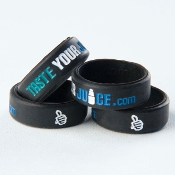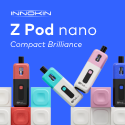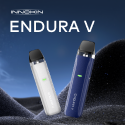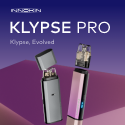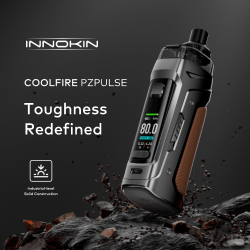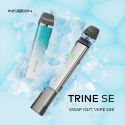Author: John Muchow
A BATTERY MOOCH POST: EHPRO Green-Black 3000mAh 40A 18650…a 15A battery, EHPRO says do not use with e-cigs!
EHPRO markets this cell to vapers but their web site clearly states it’s not meant for use with e-cigarettes and that it is a serious misuse of the cell. We’ve seen retail vendors do this, it’s just a standard liability statement, but when the battery wrapping company does this with their own cells then is it done at our expense?
What should we do when a company is willing to sell us something, pocket the profits, and then say not to use what we bought? If you didn’t buy direct from their web site you’d never know they say not to use with e-cigs. Just something to consider. This is different than what Sony and LG do as they do not market to vapers and they actively try to keep us from using their cells.
Since EHPRO does not want anyone to use this cell with any vaping device I am giving it a Do Not Buy recommendation.
There is no rating on this cell other than “40A MAX”. But if you go to the EHPRO web site it says it has a 32A continuous rating.
No customer should have to go on a quest to hunt down the continuous rating of a cell they are using. Any “max”, “pulse”, or “max pulse” rating is useless as we don’t know the pulse length, time between pulses, and the criteria they used to set the rating (temperature? voltage sag? cycle life? A combination of those or other things?). We’re not able to compare this cell’s pulse rating to any other’s.
Unfortunately, the 32A continuous rating is HUGELY exaggerated. This EHPRO appears and performs identically to the VTC6. Sony rates the VTC6 at 15A continuous. There is a non-continuous rating of 30A if you don’t let the VTC6 exceed 80°C but that will accelerate aging of the cell and is not recommended. The voltage sag will be huge too.
I am rating this EHPRO at 15A and 3000mAh for any non-vaping use.
Two cells were donated for the purposes of testing by EHPRO (http://www.ehpropower.com). Thank you!
Ratings graphic: https://imgur.com/a/Ujs5J
These tests only note the estimated ratings for these batteries at the time I tested them. Any battery that is not a genuine Samsung, Sony, LG, Panasonic, or Sanyo can change at any time! This is one of the hazards of using “rewrapped” batteries or batteries from other manufacturers so carefully research any battery you are considering using before purchasing.
Misusing or mishandling lithium-ion batteries can pose a SERIOUS RISK of personal injury or property damage. They are not meant to be used outside of a protected battery pack. Never exceed the battery’s continuous current rating and keep the plastic wrap and top insulating ring in perfect condition.
Any rating in the tables can change at any time as different grade cells appear on the market or we get swamped with fakes. Please, never assume that the ratings in the table are permanent and will never change! Always download the latest version before considering any cell purchase.
To see how other cells have tested check out this link: https://www.e-cigarette-forum.com/forum/blog-entry/list-of-battery-tests.7436/
A BATTERY MOOCH POST: EHPRO Silver-Black 2600mAh 40A 18650…EHPRO says do not use with e-cigs!
EHPRO markets this cell to vapers but their web site clearly states it’s not meant for use with e-cigarettes and that it is a serious misuse of the cell. We’ve seen retail vendors do this, it’s just a standard liability statement, but when the battery wrapping company does this with their own cells then is it done at our expense?
What should we do when a company is willing to sell us something, pocket the profits, and then say not to use what we bought? Just something to consider. This is different than what Sony and LG do as they do not market to vapers and they actively try to keep us from using their cells.
Since EHPRO does not want anyone to use this cell with any vaping device I am giving it a Do Not Buy recommendation.
There is no rating on this cell other than “40A MAX”. But if you go to the EHPRO web site it says it has a 32A continuous rating. This cell doesn’t even have the tiny “max continuous discharge” and “max pulse discharge” ratings on the wrap that the 2000mAh and 2200mAh cells have.
No customer should have to go on a quest to hunt down the continuous rating of a cell they are using. Any “max”, “pulse”, or “max pulse” rating is useless as we don’t know the pulse length, time between pulses, and the criteria they used to set the rating (temperature? voltage sag? cycle life? A combination of those or other things?). We’re not able to compare this cell’s pulse rating to any other’s.
Unfortunately, the 32A rating is exaggerated a bit and results in short cycle life too. This appears to be a VTC5A rewrap…for now. That is an expensive cell to rewrap and anyone purchasing this cell to get VTC5A’s should carefully examine and test the cell to make sure it’s still a VTC5A that’s being rewrapped.
While Sony rates the VTC5A at 30A continuous that results in a shorter cycle life. This is why I rate the VTC5A at 25A, to give the VTC5A about the same cycle life as other cells you might be comparing it too. If we allowed other cells to get that hot their ratings would be higher too.
This EHPRO’s capacity rating of 2600mAh matches the “nominal” (typical) capacity rating of the VTC5A but the “rated” capacity (the number I use) of the VTC5A is 2500mAh.
I am rating this EHPRO at 25A and 2500mAh for any non-vaping use.
Two cells were donated for the purposes of testing by EHPRO (http://www.ehpropower.com). Thank you!
Ratings graphic: https://imgur.com/a/qMylK
These tests only note the estimated ratings for these batteries at the time I tested them. Any battery that is not a genuine Samsung, Sony, LG, Panasonic, or Sanyo can change at any time! This is one of the hazards of using “rewrapped” batteries or batteries from other manufacturers so carefully research any battery you are considering using before purchasing.
Misusing or mishandling lithium-ion batteries can pose a SERIOUS RISK of personal injury or property damage. They are not meant to be used outside of a protected battery pack. Never exceed the battery’s continuous current rating and keep the plastic wrap and top insulating ring in perfect condition.
Any rating in the tables can change at any time as different grade cells appear on the market or we get swamped with fakes. Please, never assume that the ratings in the table are permanent and will never change! Always download the latest version before considering any cell purchase.
To see how other cells have tested check out this link: https://www.e-cigarette-forum.com/forum/blog-entry/list-of-battery-tests.7436/
A BATTERY MOOCH POST: EHPRO Red-Black 2200mAh 40A 18650…preposterously overrated, DO NOT BUY
This is one of the most overrated cells I have ever tested. Do not buy it.
The EHPRO Facebook page says it’s a 40A cell and the wrap has large letters that rate this cell at 40A “max”. The EHPRO web site does not have this cell on it.
On the wrap, in the tiniest lettering I’ve ever seen on a cell, it says it’s rated 25A continuous and 40A “max pulse discharge”. This cell only delivered 56mAh (yes, only fifty-six) at 25A continuous down to 3.2V.
The 40A pulse rating is useless as we don’t know the pulse length, time between pulses, and the criteria they used to set the rating (Temperature? Voltage sag? Cycle life? A combination of those or other things?). We’re not able to compare this cell’s pulse rating to any other’s. Pulsing this cell at 40A would cause its voltage to instantly collapse anyway.
This is a disasterously poor performing cell. I am giving this EHPRO cell an estimated rating of 5A and unknown capacity as it’s not worth my time testing it further. Watt-hour and internal resistance measurements were not done due to its Do Not Buy recommendation.
Two cells were donated for the purposes of testing by EHPRO (http://www.ehpropower.com). Thank you!
Ratings graphic: https://imgur.com/a/NCDFk
These tests only note the estimated ratings for these batteries at the time I tested them. Any battery that is not a genuine Samsung, Sony, LG, Panasonic, or Sanyo can change at any time! This is one of the hazards of using “rewrapped” batteries or batteries from other manufacturers so carefully research any battery you are considering using before purchasing.
Misusing or mishandling lithium-ion batteries can pose a SERIOUS RISK of personal injury or property damage. They are not meant to be used outside of a protected battery pack. Never exceed the battery’s continuous current rating and keep the plastic wrap and top insulating ring in perfect condition.
Any rating in the tables can change at any time as different grade cells appear on the market or we get swamped with fakes. Please, never assume that the ratings in the table are permanent and will never change! Always download the latest version before considering any cell purchase.
To see how other cells have tested check out this link: https://www.e-cigarette-forum.com/forum/blog-entry/list-of-battery-tests.7436/
A BATTERY MOOCH POST: EHPRO Pink-Black 2000mAh 35A 18650…a poor performing 20A battery
This EHPRO doesn’t match any Samsung, Sony, LG, or Panasonic/Sanyo cell I have. I do not know if it is a China-manufactured cell.
The EHPRO Facebook page says it’s a 35A cell and the wrap has large letters that rate this cell at 35A “max”. The EHPRO web site does not have this cell on it.
On the wrap, in the tiniest lettering I’ve ever seen on a cell, it says it’s rated 20A continuous and 35A “max pulse discharge”. This pulse rating is useless as we don’t know the pulse length, time between pulses, and the criteria they used to set the rating (Temperature? Voltage sag? Cycle life? A combination of those or other things?). We’re not able to compare this cell’s pulse rating to any other’s.
Why is the lettering for the continuous rating so small but the 35A “max” rating so large? Why is this only referred to as a 35A cell on their Facebook page? Things that make you go hmm…
This is a poor performing cell with a lot of voltage sag. The Samsung 20R, having the same 2000mAh capacity rating as this EHPRO, ran almost twice as long at 20A down to 3.2V. I am giving this EHPRO cell an estimated rating of 20A and 2000mAh.
Watt-hour and internal resistance measurements were not done as this is a poor performing, overrated cell. The inexpensive Samsung 25R runs for more than twice as long at 20A, runs several degrees cooler, is widely available, and performs a lot better too.
Two cells were donated for the purposes of testing by EHPRO (http://www.ehpropower.com). Thank you!
Ratings graphic: https://imgur.com/a/SFIPR
These tests only note the estimated ratings for these batteries at the time I tested them. Any battery that is not a genuine Samsung, Sony, LG, Panasonic, or Sanyo can change at any time! This is one of the hazards of using “rewrapped” batteries or batteries from other manufacturers so carefully research any battery you are considering using before purchasing.
Misusing or mishandling lithium-ion batteries can pose a SERIOUS RISK of personal injury or property damage. They are not meant to be used outside of a protected battery pack. Never exceed the battery’s continuous current rating and keep the plastic wrap and top insulating ring in perfect condition.
Any rating in the tables can change at any time as different grade cells appear on the market or we get swamped with fakes. Please, never assume that the ratings in the table are permanent and will never change! Always download the latest version before considering any cell purchase.
To see how other cells have tested check out this link: https://www.e-cigarette-forum.com/forum/blog-entry/list-of-battery-tests.7436/
A BATTERY MOOCH POST: Vapcell Purple 5-Leg Top 30A 3000mAh 20700…same as other 5-leg top contact 20700’s
This Vapcell is identical in appearance and performance to the other 5-“leg” top contact 3000mAh 20700’s that I have tested from Ampking, Efest, EBAT, Keeppower, EnerCig, and iJoy.
Vapcell clearly marks this cell with an accurate continuous current rating, which is fantastic and should be done by every company.
But, as the other 5-leg cells have done, this Vapcell is overrated in capacity. It delivered 2916mAh and 2929mAh for the two cells I tested. I am rating this cell at 30A and 2900mAh. This is very frustrating considering the accurate current rating. There’s just no need for this exaggerated capacity rating.
Two cells were purchased for the purposes of testing by me.
Ratings graphic: https://imgur.com/a/sr3gW
These tests only note the estimated ratings for these batteries at the time I tested them. Any battery that is not a genuine Samsung, Sony, LG, Panasonic, or Sanyo can change at any time! This is one of the hazards of using “rewrapped” batteries or batteries from other manufacturers so carefully research any battery you are considering using before purchasing.
Misusing or mishandling lithium-ion batteries can pose a SERIOUS RISK of personal injury or property damage. They are not meant to be used outside of a protected battery pack. Never exceed the battery’s continuous current rating and keep the plastic wrap and top insulating ring in perfect condition.
Any rating in the tables can change at any time as different grade cells appear on the market or we get swamped with fakes. Please, never assume that the ratings in the table are permanent and will never change! Always download the latest version before considering any cell purchase.
To see how other cells have tested check out this link: https://www.e-cigarette-forum.com/forum/blog-entry/list-of-battery-tests.7436/
A BATTERY MOOCH POST: IMR, INR, and ICR are not battery chemistries!
A BATTERY MOOCH POST: Vapcell YR1030 AC Internal Resistance Battery Tester
This is just a quick look at a battery tester Vapcell sent me. This was not a comprehensive test or a check of build consistency between units, durability, reliability, or safety.
The YR1030 is an affordable, accurate tester that measures the AC internal resistance of a battery. This is the the internal resistance typically listed in a battery’s datasheet. It is measured using a low voltage, low current 1000Hz sine wave injected into the battery and then measuring the battery’s response.
The AC internal resistance is lower than the DC internal resistance which is used to determine how much a battery’s voltage will sag when current is drawn from it. But, the AC internal resistance is the industry standard and the only number typically posted by the manufacturers.
This meter can be used to measure the AC internal resistance of different cells to roughly gauge their relative performance or to help find fakes. Vendors could use it for spot checking new shipments to see if low amp fakes were mixed in with a batch of higher current rated cells.
It operates from an internal pouch cell, probably LiPo, which is recharged via USB. The cell stayed cool and charged to 4.14V in my unit. This helps extend the life of the cell versus charging to 4.20V.
The tester comes with the dual-pin probes shown in the photos. The alligator clamps and battery testing fixture are optional extras. Which you use depends on how you will do your testing. I recommend using the pin probes or battery fixture as using the alligator clamps means you need a way to mount the battery.
I compared the readings from the Vapcell YR1030 against the ones I got using my BK Precision BA6010 Battery Analyzer. The results were quite close and consistent. This is important as a consistent error, i.e., an offset, can be compensated for. But inconsistent readings are useless.
This meter has “binning” functionality to help sort battery grades based on internal resistance ranges defined by the user. I suspect this is a popular unit for the China battery wrappers to use for grading cells.
The internal layout and design are okay but the flux residue on the circuit board from the hand soldered components was disappointing to see. At this price point though there has to some compromise. I saw some weirdness and locking up when recharging and trying to turn it back on but cycling the power cleared up any issues.
I would have preferred that the unit was powered from the battery being tested, instead of from an internal LiPo, but that’s just a personal preference.
You must be consistent in your testing though to get the best results from this unit. Clean the battery contacts, charge the battery, let it sit for an hour to come to room temperature, and then test it multiple times. Handle it as little possible to minimize the temperature rise from your body heat. This is all important for consistent readings. Contact Vapcell with any questions you have regarding the features and use of this unit.
Overall this seems to be a good unit for the price, around $75USD, and could be a nice addition to a shop’s/vendor’s cell testing program. I believe that Liion Wholesale (www.liionwholesale.com) has them and the accessories in stock.
Vapcell (www.vapcelltech.com) donated one unit for the purposes of testing. Thank you!
Photos and test results: https://imgur.com/a/ZQPQD
Test report: https://www.e-cigarette-forum.com/threads/quick-look-vapcell-yr1030-ac-internal-resistance-battery-tester.852255/
Misusing or mishandling lithium-ion batteries can pose a SERIOUS RISK of personal injury or property damage. They are not meant to be used outside of a protected battery pack. Never exceed the battery’s continuous current rating and keep the plastic wrap and top insulating ring in perfect condition.
Testing batteries can be dangerous and should never, ever, be attempted by anyone who has not thoroughly studied the dangers involved, understands the risks, has the proper equipment, and takes all appropriate safety precautions.
A BATTERY MOOCH POST: Sony VTC4A 18650 Samples…beats VTC4, estimated 1900-2000mAh, 25A/30A
I received two samples for testing from Vapcell. They were a bit dinged up but performed well. I was told that they will not be generally available for several months, perhaps the end of the year. I do not know who has them in stock now or when they will.
I am testing them now because of the large number of requests I received and to let vendors know how they perform. I will retest these when full production quantities are available as Sony might make small changes to the cell’s performance before then.
The two VTC4A’s I tested outperformed the VTC4. At a 10A and 20A discharge the VTC4A hit harder than the VTC4, performing even better at the higher discharge current level. I will do higher current discharge testing and comparisons when I am able to get full production versions of these cells. This is a great cell though.
For a 25A continuous discharge the VTC4A runs at about the same temperature as the VTC4 does at 20A. Sony will probably rate the VTC4A at about 5A higher than the VTC4. This could mean a continuous current rating of 30A or higher for the VTC4A, perhaps with temperature-limited operation at some point above that.
My preliminary estimate for the VTC4A’s current rating is 25A though, up to 30A if the temperature is kept below 80°C. This can change at any time as I learn more about this cell.
Why don’t I rate it higher? Sony seems to trade off cycle life for performance when setting its ratings. That is, Sony gives the VTC series of batteries high continuous current ratings but that results in high operating temperatures and fewer cycles before they start losing capacity and performance. Until I can do some cycle life testing of production versions of these cells I am setting the ratings mentioned above. These ratings should result in about the same cycle life as cells from Samsung, LG, and Panasonic/Sanyo.
The VTC4A’s I tested delivered 1988mAh and 2002mAh at 0.5A. The capacity might change a bit before the cells are available in full production quantities but I am estimating the VTC4A’s rating at 1900mAh minimum and 2000mAh typical. If the cells I received were not A Grade then the capacity ratings from Sony could be higher, e.g., 2100mAh typical.
I have requested a copy of the datasheet but no one has it yet.
Two cells were donated for the purposes of testing by Vapcell (www.vapcelltech). Thank you!
Ratings graphic: https://imgur.com/a/AotMO
These tests only note the estimated ratings for these batteries at the time I tested them. Any battery that is not a genuine Samsung, Sony, LG, Panasonic, or Sanyo can change at any time! This is one of the hazards of using “rewrapped” batteries or batteries from other manufacturers so carefully research any battery you are considering using before purchasing.
Misusing or mishandling lithium-ion batteries can pose a SERIOUS RISK of personal injury or property damage. They are not meant to be used outside of a protected battery pack. Never exceed the battery’s continuous current rating and keep the plastic wrap and top insulating ring in perfect condition.
Any rating in the tables can change at any time as different grade cells appear on the market or we get swamped with fakes. Please, never assume that the ratings in the table are permanent and will never change! Always download the latest version before considering any cell purchase.
To see how other cells have tested check out this link: https://www.e-cigarette-forum.com/forum/blog-entry/list-of-battery-tests.7436/
A BATTERY MOOCH POST: How can we extend the life of our batteries?
Episode 6 of “Minding Your mAhs” has been uploaded to my Battery Mooch YouTube channel.
A BATTERY MOOCH POST: There are newer “fat ring” Sony VTC5A batteries
The Sony Koriyama factory (“K” in lower left of the two lines of printing) has changed or added a different appearing top cap crimp to its VTC5A cell. This cell seems to perform the same (more testing to be done though) but has a wider ring crimping tool mark ring near its top. See the photos for an example.
Photos: https://imgur.com/a/9gGgt
Please note…
– While there are genuine Sony VTC5A’s with this “fat ring” that does NOT mean every VTC5A you see with a fat ring is genuine.
– The counterfeiters might have found fakes with fat rings to use. We can only say that there are genuine Sony VTC5A’s with the fat ring in production.
– If you have a VTC5A with a thinner ring this does NOT mean yours is definitely a fake. It might be anyway but there are huge numbers of genuine VTC5A’s out there with the narrower ring.
– To help determine if your VTC, any of of them, is a fake or not carefully unwrap them. If the black top insulating ring is glued on it is definitely a fake.
– If the black top insulating ring is not glued on it could be genuine. A loose top ring does not guarantee it’s an authentic Sony though as some fakes are not gluing on the ring now.
– Look for the two dimples on the top of the cell as shown in the photos. All VTC’s have these. If your cells do not then they are not genuine Sony VTC cells.
– If your cells do have the dimples then they are genuine VTC’s but there is no way to tell which. Some fake VTC5A’s have used other VTC’s.
– The wrap, wrap code, and printing are unreliable indicators of whether they are genuine or not due to their variability between factories and over time.
– Please don’t send me pictures of your cells to have me authenticate them. I am unable to. Use the checks I’ve described here. If you are still unsure and are concerned they might be fakes then speak to the vendor you purchased them from.










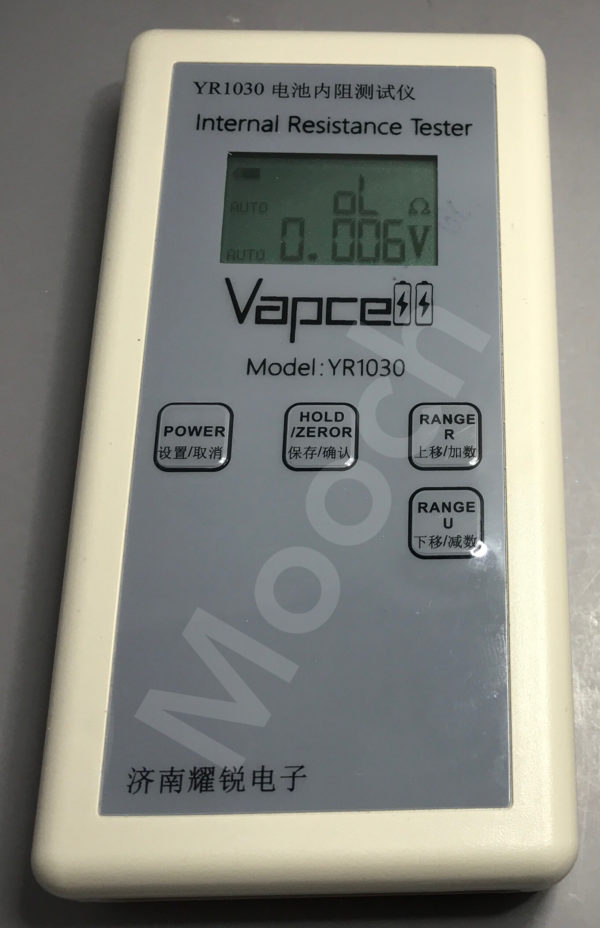

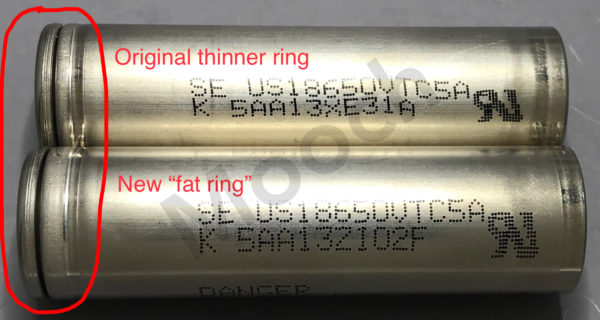









 Store
Store
